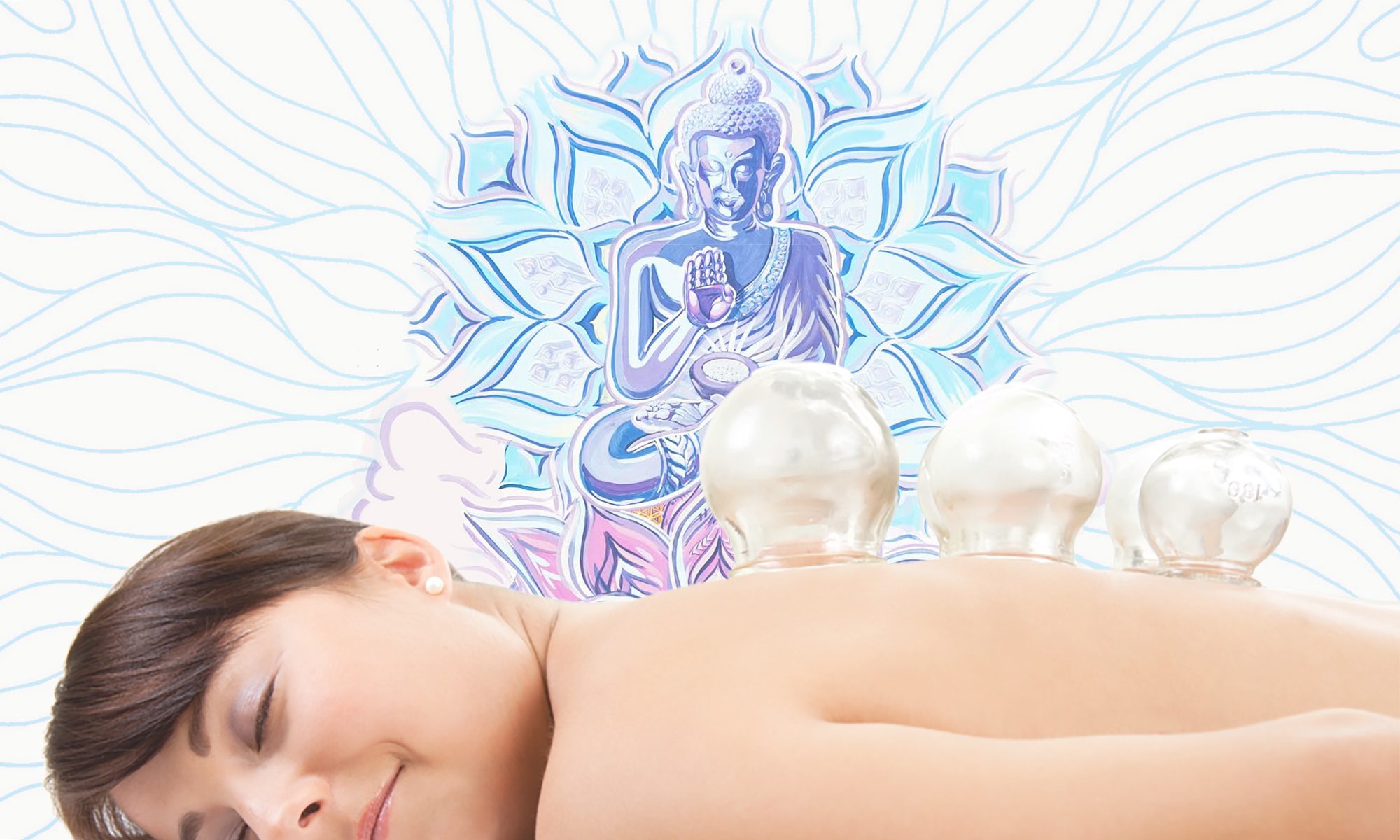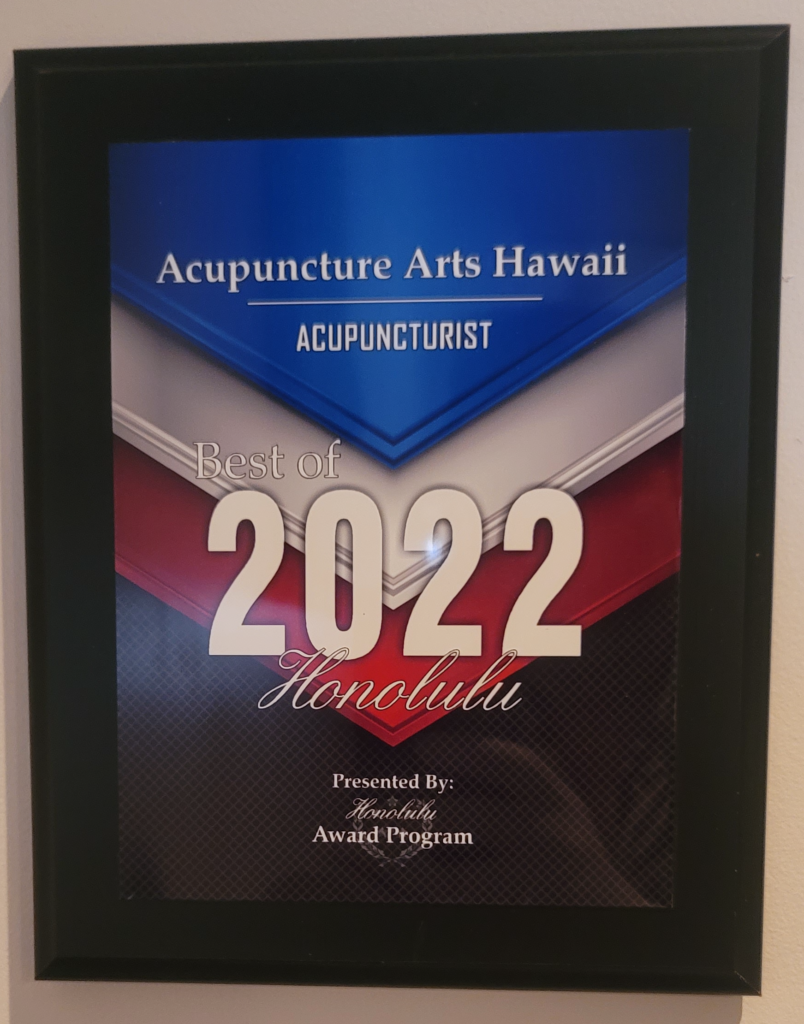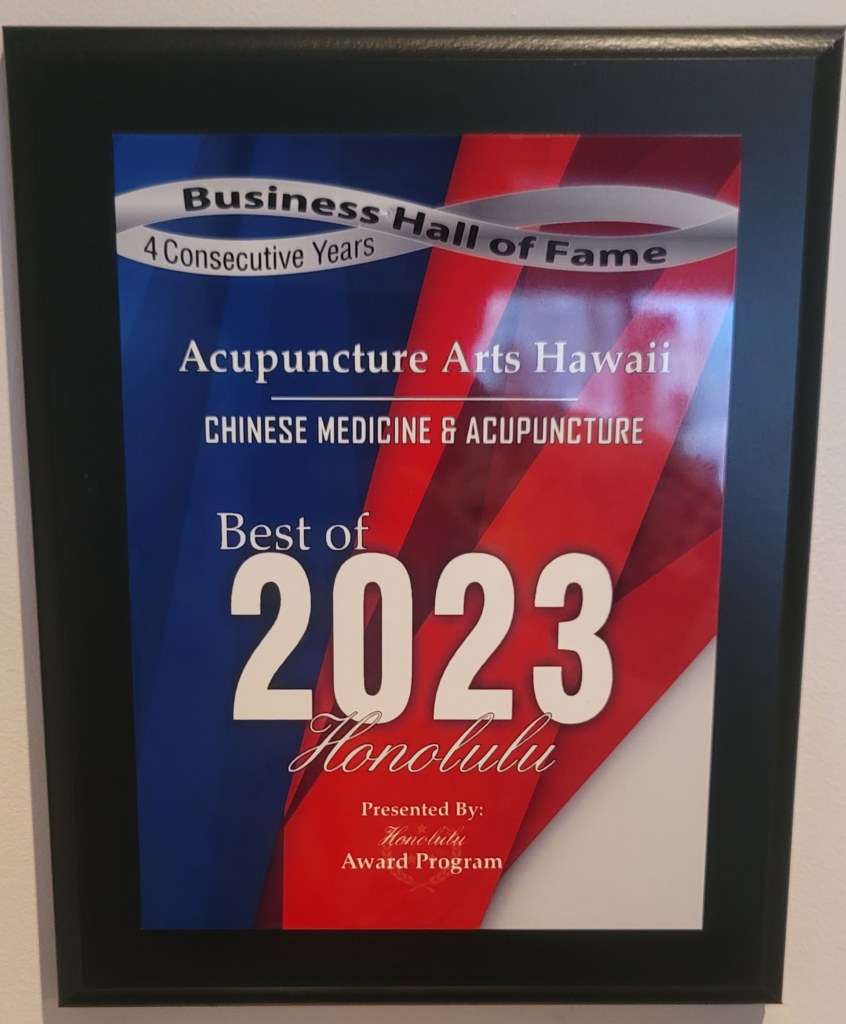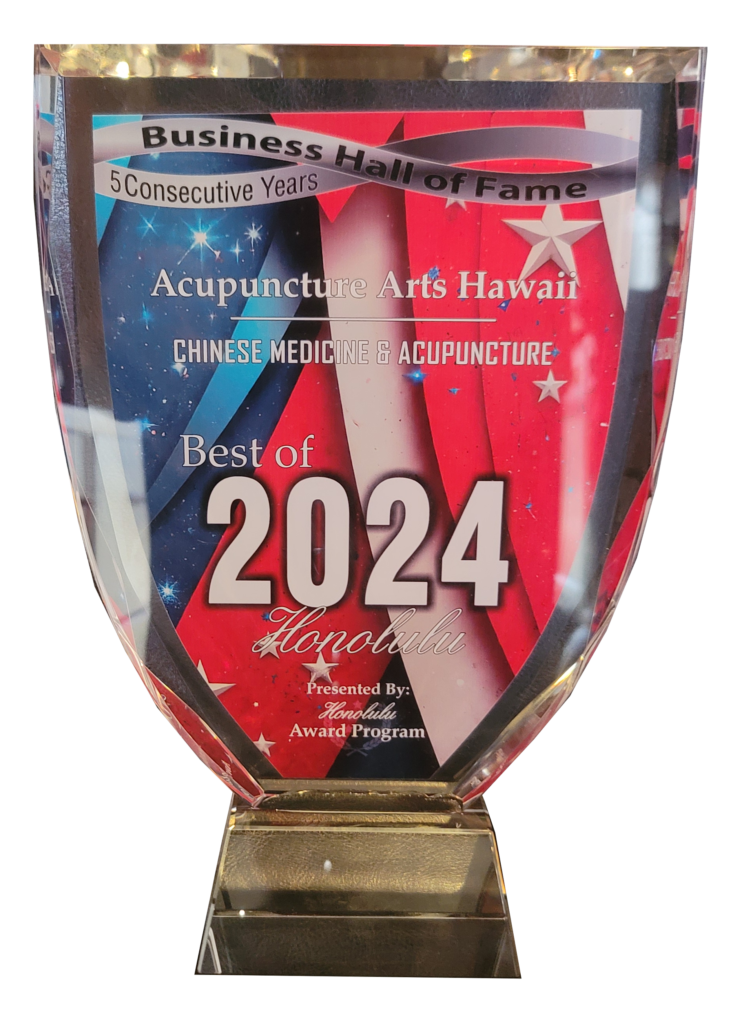
Happy Lunar New Year! Year of the Dragon Special: 20% OFF Any Service / Treatment for New & Existing Patients
Voted Best Acupuncturist in Honolulu 8 Years in a Row! by Honolulu Magazine & Expertise.com
Voted #1 Acupuncturist in Honolulu, Hawaii 7 Years in a Row 2016 – 2022
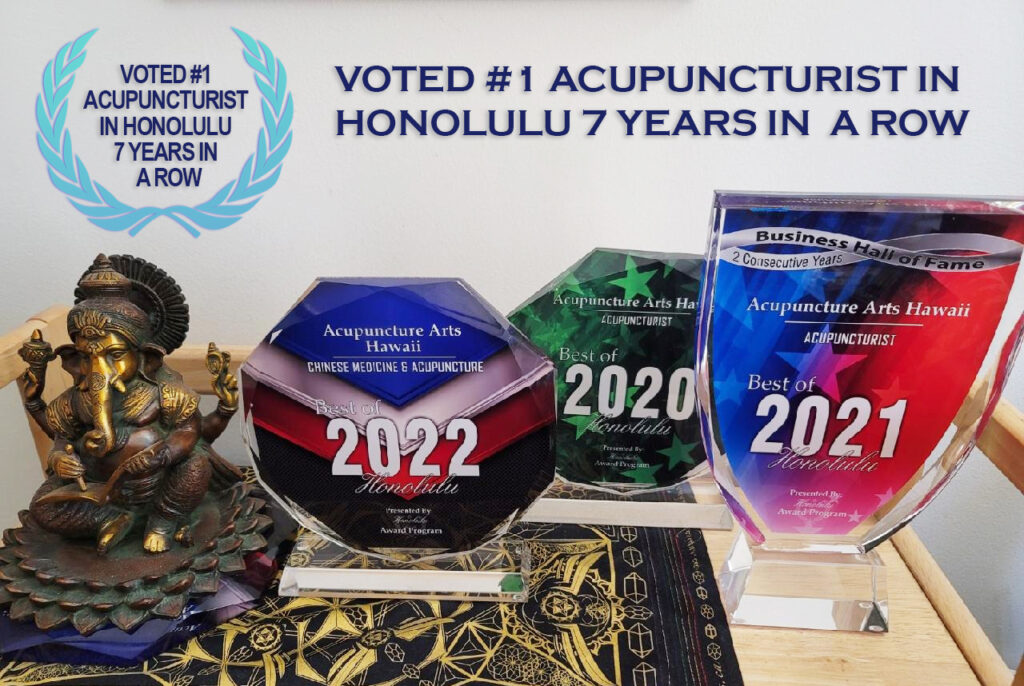
Acupuncture May Help Prevent Migraines
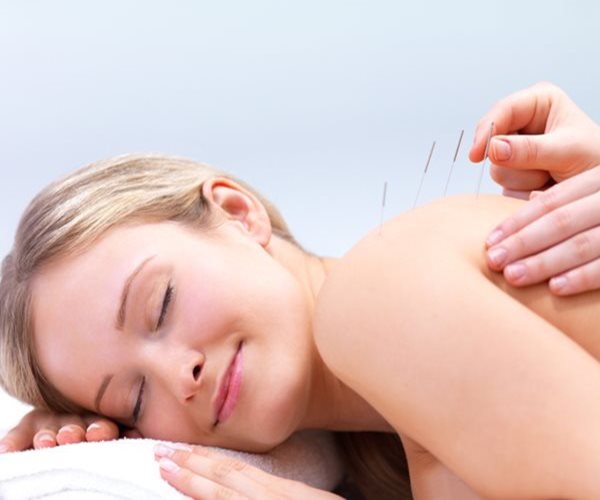 For people with a certain type of migraine headache, regular acupuncture treatments may help reduce the frequency of these debilitating attacks, a recent study from China suggests.
For people with a certain type of migraine headache, regular acupuncture treatments may help reduce the frequency of these debilitating attacks, a recent study from China suggests.
Patients who suffered migraines without aura, and who received five true acupuncture treatments per week for four consecutive weeks had about one less headache per month than similar patients who got the same number of sham acupuncture treatments, researchers report.
“Acupuncture should be considered as one option for migraine prophylaxis in light of our findings,” the authors write in JAMA Internal Medicine.
About 18 percent of women and 6 percent of men in the U.S. suffer from migraine headaches in a given year, according to a 2001 study, making the condition a leading cause of disability.
Acupuncture is commonly used to treat migraines in China, however, studies of whether it works for migraine prevention have been inconsistent, the study team notes.
Ling Zhao of Chengdu University of Traditional Chinese Medicine in Sichuan, China, and colleagues recruited 249 adults who had an average of two to eight migraines without aura per month from three clinical centers in China.
For the study, participants kept track of their migraine headache frequency and severity for four weeks before being randomly assigned to receive true acupuncture treatment, sham acupuncture treatment or to be put on a waiting list for treatment.
People in both the true and sham acupuncture groups received 20 treatments with acupuncture needles and electrical stimulation, each lasting thirty minutes.
The true acupuncture group was treated at four acupuncture points thought to affect headaches and with enough electrical stimulation to elicit a “Deqi” sensation, which includes “soreness, numbness, distention or radiation that indicated effective needling,” according to the authors.
For the sham treatment, the needles were placed in areas not known to be acupuncture points and the deqi sensation wasn’t induced.
At 16 weeks, the number of migraines reported in the true acupuncture group fell by about three attacks per month, while people in the sham acupuncture group had two fewer attacks per month.
Among the study’s limitations, about 20 percent of the participants had previous experience with acupuncture, and it’s not known how many may have been able to guess whether their treatments were real or sham.
“Placebo response is strong in migraine treatment studies, and it is possible that the Deqi sensation . . . that was elicited in the true acupuncture group could have led to a higher degree of placebo response because there was no attempt made to elicit the Deqi sensation in the sham acupuncture group,” Dr. Amy Gelfand writes in an accompanying editorial.
Gelfand, a neurologist at the University of California, San Francisco, told Reuters Health that the placebo effect is interesting and important, especially in migraine studies, but she thinks about it differently as a researcher and as a clinician.
“When I’m a researcher, placebo response is kind of a troublesome thing, because it makes it difficult to separate signal from noise,” she said. But when she’s thinking as a doctor about the patient in front of her, placebo response is welcome, Gelfand said.
“You know, what I really want is my patient to feel better, and to be improved and not be in pain. So, as long as something is safe, even if it’s working through a placebo mechanism, it may still be something that some patients might want to use,” she said.
When a patient is interested in a treatment that may have a strong placebo effect, Gelfand added, “There’s a real checklist in my head, with safety being the first thing; and if it seems like it’s safe then I think about things like cost, because often these things are not going to be covered by insurance, but to a certain extent that’s the patient’s decision; and I think about time, because these treatments can be time-consuming.”
It’s a good idea to keep your doctor informed of any treatments that you’re using, be they over-the-counter supplements or non-pharmacologic behavioral treatments, she said.
“I think that that’s part of the picture, and as a provider, I like to know about all of those things. If for no other reason than it just helps me understand what kind of treatments my patient values and is looking for,” Gelfand said.
http://www.newsmax.com/t/health/article/775313?ns_mail_uid=58186744&ns_mail_job=1714212_02262017&s=al&dkt_nbr=ydnurkei%C2%A7ion&keywords=acupuncture-prevent-migraines&year=2017&month=02&date=23&id=775313&aliaspath=%2FHealth%2FArticle%2FArticleTemplate&oref=news.newsmax.com
Grand Opening!

Come help us celebrate our official Grand Opening Celebration for our new non-profit 501c3 ‘Aloha Health Collective’. Which features Acupuncture Arts & Align DaKine with Dr. Kevin Cabriales. We will be having an all day meet and greet for the community and surrounding businesses to share our vision of making Holistic medicine accessible to everyone. Come check out our brand new Penthouse clinic, get free consultations. Free community style Acupuncture.
We will also be doing a raffle of gift certificates for free, and half off treatments & other healthful goodies. Drinks and pupus at 5. Pot luck style welcome. Lantern Floating ceremony/blessing at 7pm.
Friday September 30, 2016 – 5-8pm
Aloha Collective / Acupunctures Arts Hawaii
1136 Bishop St, 9th Floor, Penthouse 1B
Honolulu, Hawaii 96813
New Research Acupuncture Can Ease Menopause Symptoms
A new study has found that acupuncture treatments can reduce the number of hot flashes and night sweats associated with menopause by as much as 36 percent.
“Although acupuncture does not work for every woman, our study showed that, on average, acupuncture effectively reduced the frequency of hot flashes and results were maintained for six months after the treatments stopped,” said Nancy Avis, Ph.D., a professor of public health sciences at Wake Forest Baptist Medical Center and lead author of the study.
Funded by the National Institutes of Health, the study included 209 women between the ages of 45 and 60 who had not had a menstrual period for at least three months. On average they had at least four hot flashes or night sweats a day in the previous two weeks.
Participants received a baseline assessment and were then randomly placed in one of two groups.
The first group received acupuncture treatments during the first six months. They were then followed without receiving acupuncture for the second six months.
The second group did not receive any acupuncture during the first six months, but did receive acupuncture for the second six months.
The women were allowed up to 20 treatments within six months provided by licensed, experienced acupuncturists in the community.
According to Avis, the study was designed to make it more “real world” by leaving the frequency and number of the acupuncture treatments up to the study participants and their acupuncturists.
All the women kept a daily diary on the frequency and severity of their hot flashes. They also answered questionnaires about other symptoms every two months.
After six months, the first group reported an average 36.7 percent decline in the frequency of hot flashes compared to baseline measurements. After a year, the benefits persisted, with the women maintaining an average 29.4 percent reduction from baseline.
The second group reported a six percent increase in symptom frequency during the six months when they were not getting acupuncture, but had similar results — an average 31 percent reduction in frequency — to the first group after receiving acupuncture during the second half of the trial, the researchers reported.
“There are a number of non-hormonal options for treating hot flashes and night sweats that are available to women,” Avis said. “None of these options seem to work for everyone, but our study showed that acupuncture from a licensed acupuncturist can help some women without any side effects. Our study also showed that the maximum benefit occurred after about eight treatments.”
Avis cautioned that the effect shown in the study could be due to non-specific effects, such as the additional care and attention the study participants received or the expectation of a benefit.
She also said that additional research is needed to identify individual differences in response to acupuncture.
The study was published in the journal Menopause.
Diabetes & Acupuncture Combined with Chinese Herbal Medicine
Diabetes has become a common disease, as more than 1 million Americans will be diagnosed with Diabetes, this year alone. Diabetes is considered a long-term condition, however the symptoms are are manageable and greatly diminished by using alternative healing modalities like Traditional Chinese Medicine (TCM).
If you have Diabetes, this means that your body isn’t producing enough insulin, which is secreted by the pancreas. In Traditional Chinese Medicine, the pancreas is considered to be part of the Spleen organ system, and the root cause of Diabetes is viewed as a correctable energetic disharmony.
Type I Diabetes is an autoimmune disease in which the body attacks itself and the ability to produce insulin cells. Type II Diabetes accounts for more than 90% of Diabetes in American, and it is often a disease caused by poor nutrition and a lack of regular exercise. The theories behind treatment strategies can vary, both Type I and Type II Diabetes can be treated and managed effectively with acupuncture and Traditional Chinese Medicine.
Acupuncture and Traditional Chinese Medicine may be used to help reduce the dependency on insulin. The best approach approach treating Diabetes often includes a team of health care providers, but if you or someone you know if suffering from Type I or Type II Diabetes be sure to consider Acupuncture and Traditional Chinese Medicine (TCM) in your treatment plan and recovery strategy.
Cancer Care and Management with Acupuncture and Chinese Herbal Medicine
Cancer is a diagnosis that may leave you feeling frightened and powerless, but it is important to have hope. In many cases, cancer is a curable disease, especially when detected early. Acupuncture and Traditional Chinese Medicine (TCM) can not only reduce the side effects of standard Western medical therapies like radiation and chemotherapy, but they can also harmonize the body’s energy and tonify the immune system to help fight cancer. Cancer is a blanket term for a group of diseases that occur when the body’s cells begin to reproduce abnormally and damage healthy tissues.
Acupuncture Traditional Chinese Medicine practitioners take a whole body (holistic) approach with health care. In addition to acupuncture, you TCM practitioner may suggest Chinese herbs, nutrition advice, massage and/or vitamin supplements. The goal is to treat the entire person, not just the disease. Accordingly, the patient’s lifestyle, overall health and emotional state are considered when diagnosing and treating cancer in Traditional Chinese Medicine.
Acupuncture and Traditional Chinese Medicine can help to relieve nausea and vomiting, post-surgical pain, and fatigue resulting from cancer treatments like surgery, radiation and chemotherapy. It is important to take into consideration alternative healing treatments and health care options that can help you fight cancer and win. Acupuncture is preventative, it is a good way to continue treatment even when you’ve beaten cancer.
Acupuncture for Arthritis
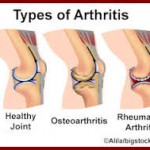 Arthritis is one of the most pervasive diseases in the United States and is the leading cause of disability. According to the Centers for Disease Control and Prevention one out of every three Americans (an estimated 70 million people) is affected.
Arthritis is one of the most pervasive diseases in the United States and is the leading cause of disability. According to the Centers for Disease Control and Prevention one out of every three Americans (an estimated 70 million people) is affected.
For most people arthritis pain and inflammation cannot be avoided as the body ages. In fact, most people over the age of 50 show some signs of arthritis. Joints naturally degenerate over time. Fortunately, arthritis can often be managed Acupuncture and Oriental Medicine.
What is Arthritis?
Arthritis isn’t just one disease; it’s a complex disorder that comprises more than 100 distinct conditions and can affect people at any stage of life. Two of the most common forms are osteoarthritis and rheumatoid arthritis. While these two forms of arthritis have very different causes, risk factors, and effects on the body, they often share a common symptom—persistent joint pain.
Osteoarthritis (OA) is the most common form of arthritis in the United States, affecting an estimated 21 million adults. OA begins with the breakdown of joint cartilage, resulting in pain and stiffness.
OA commonly affects the joints of the fingers, knees, hips, and spine. Other joints affected less frequently include the wrists, elbows, shoulders, and ankles. When OA is found in a less frequently affected joint, there is usually a history of injury or unusual stress to that joint. Work-related repetitive injury and physical trauma may contribute to the development of OA. If you have a strenuous job that requires repetitive bending, kneeling, or squatting, for example, you may be at high risk for OA of the knee.
Rheumatoid arthritis (RA) can affect many different joints and, in some people, other parts of the body as well, including the blood, the lungs, and the heart. Inflammation of the joint lining, called the synovium, can cause pain, stiffness, swelling, warmth, and redness. The affected joint may also lose its shape, resulting in loss of normal movement. RA can last a long time and can be a disease of flares (active symptoms) and remissions (few to no symptoms).
Diagnosis and Treatment of Arthritis with Acupuncture and Oriental Medicine
According to Chinese medical theory, arthritis arises when the cyclical flow of Qi in the meridians becomes blocked. This blockage is called, “bi” type pain and is widely studies and successfully treated using a combination of acupuncture and/or Chinese herbs.
Acupuncture and Oriental Medicine have been found to be extremely effective at treating the pain and inflammation associated with all types of arthritis. The acupuncture points and herbs that are used depend on if the blockage of Qi (arthritis) is caused by the pathogen wind, cold, damp or damp-heat.
Traditional Chinese Medicine does not recognize arthritis as one particular syndrome. Instead, it aims to treat the specific symptoms that are unique to each individual using a variety of techniques such as acupuncture, Chinese herbs, bodywork, lifestyle/dietary recommendations and energetic exercises to restore imbalances found in the body. Therefore, if 10 patients are treated with Oriental medicine for joint pain, each of these 10 patients will receive a unique, customized treatment with different acupuncture points, different herbs and different lifestyle and diet recommendations.
Your acupuncturist will examine you, take a look at the onset of your condition and learn your signs and symptoms to determine your Chinese diagnosis and choose the appropriate acupuncture points and treatment plan.
The Acupuncture Treatment
Acupuncture points to treat Arthritis are located all over the body, not just directly over the affected area. During the acupuncture treatment, tiny needles could be placed along your legs, arms, shoulders, and perhaps even your little toe!
There seems to be little sensitivity to the insertion of acupuncture needles. They are so thin that several acupuncture needles can go into the middle of a hypodermic needle. Occasionally, there is a brief moment of discomfort as the needle penetrates the skin, but once the needles are in place, most people relax and even fall asleep for the duration of the treatment.
The length, number and frequency of treatments will vary. Typical treatments last from five to 30 minutes, with the patient being treated one or two times a week. Some symptoms are relieved after the first treatment, while more severe or chronic ailments often require multiple treatments.
Chinese Herbs for Arthritis
There are many Chinese Herbal formulas that are prescribed for arthritis. Your acupuncturist will examine you, take a look at the onset of your condition and learn your signs and symptoms to determine which herbs are best for you.
Here are some commonly prescribed Chinese herbal formulas for arthritis:
Remove Painful Obstruction Decoction (juan bi tang)- For joint pain that increases with cold and is possibly accompanied by heaviness and numbness in the limbs.
Cinnamon Twig, Peony, and Anamerrhena Decoction (gui zhi shoa you zhi mu tang)- For swollen and painful joints that are warm to the touch and worse at night.
Angelica Pubescens and Sangjisheng Decoction (du huo ji sheng tang)- For heavy and painful sensations at fixed locations in the lower back and lower extremities accompanied by weakness and stiffness.
Studies on Acupuncture and Arthritis
Several studies have shown that acupuncture can help people with arthritis and related auto-immune diseases.
In one Scandinavian study 25 percent of arthritis patients who had been scheduled for knee surgery cancelled their operations after acupuncture treatment. In the study, researchers compared acupuncture with advice and exercise for the treatment of osteoarthritis of the hip. Thirty-two patients awaiting a total hip replacement were separated into 2 groups. One group received one 10-minute and five 25-minute sessions of acupuncture, and the other group received advice and hip exercises over a 6-week period.
Patients were assessed for pain and functional ability: Patients in the acupuncture group showed significant improvements, while no significant changes were reported in the group that received advice and exercise therapy. The results of this study indicate that acupuncture is more effective than advice and exercise for the treatment of osteoarthritis of the hip.
Another study at the University of Maryland showed that elderly arthritis patients with knee pain due to arthritis improved significantly when acupuncture was added to their treatment.
The randomized clinical trial, performed at the University of Maryland School of Medicine, determined whether acupuncture was a clinically safe and effective adjunctive therapy for older patients with osteoarthritis of the knee.
The study addressed these questions:
1.Would the addition of acupuncture to conventional therapy produce an added measure of pain relief?
2.Would the effects of acupuncture last for 4 weeks following the end of treatment?
3.Would acupuncture have any side effects?
Seventy-three patients were randomly divided into 2 groups. One group received twice-weekly acupuncture treatments and conventional therapy for 8 weeks, and the other group received conventional therapy only. Patients who received acupuncture had significant pain relief and showed improvement in function. Those who did not receive acupuncture showed no significant change. No patients reported side effects from any acupuncture therapy session.
Safe Alternative to Medication
Even without the studies, the popularity of acupuncture for arthritis continues to grow because more and more people have found significant relief from Oriental Medicine without the negative side effects that come from Western pharmaceuticals.
Lifestyle and Dietary Instructions
Your diet plays a crucial role in helping you avoid or control arthritis. The first objective of a healthy diet is to help you lose weight if you are overweight. Being overweight can cause additional stress to your joints.
The second way a balanced, varied diet can help ease the pain of arthritis is by providing vitamins and minerals that keep your joints healthy and avoiding “damp” foods such as dairy products and greasy or spicy foods.
If you have arthritis or knee or hip pain, vitamin C and vitamin D can help prevent bone and cartilage destruction. And a multivitamin can help ensure that you always get the nutrition you need.
Here are some other healthy (and delicious) choices to include in your diet.
Ginger – A natural anti-inflammatory, available as powdered extracts in capsules as well as alcohol-based extracts. Follow the dosing directions on the label. Or make tea by combining one-half teaspoon of grated ginger root with eight ounces of boiling water. Cover and steep for 10 to 15 minutes, then strain and add honey to taste.
Fresh pineapple – Bromelain, an enzyme in pineapple, reduces inflammation. Be sure the pineapple is fresh, not canned or frozen.
Cherries – Recent research has shown that tart cherries are an excellent source of nutrients that may help to reduce joint pain and inflammation related to arthritis.
Fish – Cold-water fish such as salmon and mackerel contain omega-3 fatty acids, which help keep joints healthy as well as reduce pain and swelling. If you don’t care for fish, consider supplementing your diet with fish oil capsules.
Turmeric – Another natural anti-inflammatory. Look for an extract of whole turmeric, in health-food stores; follow the dosage directions on the label.
Find an Acupuncturist
Today, acupuncture is an acknowledged and respected field of medicine which requires formal training and certification in order to practice. In most States, provinces and countries, acupuncture is legislated in order to assure quality of treatment.
Acupuncture and Oriental medicine is an art and a science that takes years to master. Look for an acupuncturist with formal training and experience in the treatment of Arthritis on www.Acufinder.com
References:
Diane Joswick, L.Ac., MSOM
Rheumatology in Chinese Medicine, 2002. By G. Guillaume & M. Chieu
Chinese Herbal Medicine: Formulas and Strategies, 1990. By Dan Bensky & Randall Barolet
Acupuncture: A Comprehensive Text By Shanghai College of Traditional Chinese Medicine, 1981
